Do You Really Know How Your Orthopedic Practice is Performing?
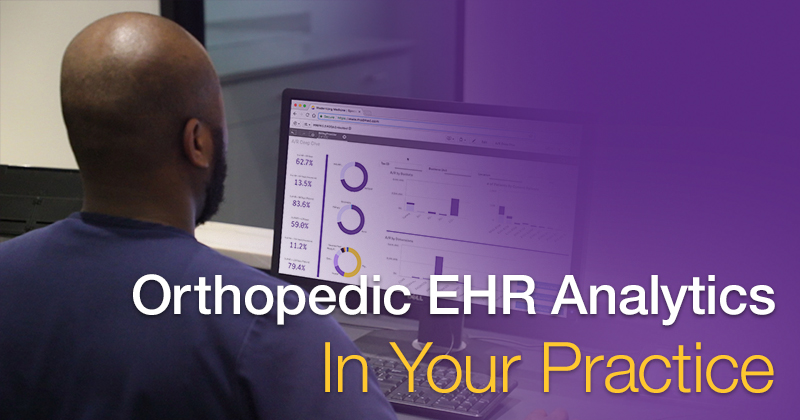
Here’s how you can harness the power of data analytics in your orthopedic EHR.
When you research orthopedic electronic health record (EHR) systems, the ability to capture and analyze data should not be overlooked. Accessing and understanding your data can help uncover countless ways to improve the efficiency and performance of your orthopedic practice.
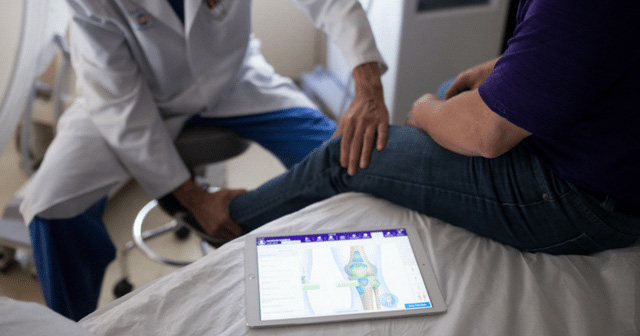 The Value of Orthopedic EHR Analytics
The Value of Orthopedic EHR Analytics
Some orthopedic software can help you to examine your practice’s data unlike any paper chart ever could. Nowadays, those few orthopedic EHRs can capture structured, actionable data that can help automate aspects of patient adherence to treatment guidelines and regulatory compliance. The key component is “structured” data, which means it is mineable and can be uniquely identified retrospectively for subjects like operational analysis, clinical research and Merit-based Incentive Payment System (MIPS) reporting. An intelligent orthopedic EHR system not only captures your structured data, but also provides tools to help you analyze and visualize it to help you find meaningful insights into your orthopedic practice’s performance.
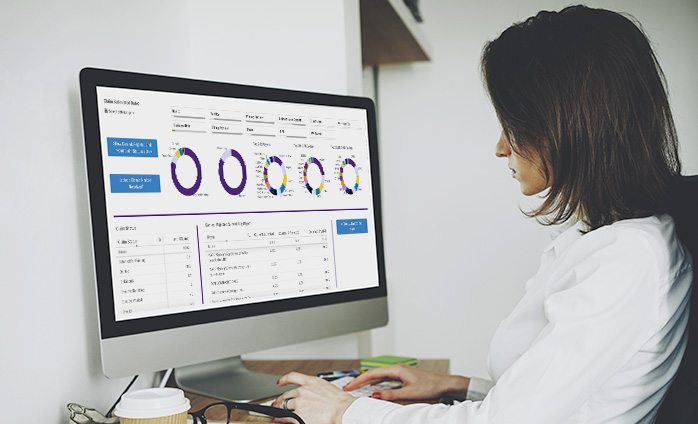 The Impact of Analytics on the Entire Orthopedic Team
The Impact of Analytics on the Entire Orthopedic Team
A structured data solution within your orthopedic EHR should provide flexible solutions to help find the answers you need, helping you and your practice work smarter, and not harder. An orthopedic surgeon, the administrative staff and the billing team all have different priorities and questions they want answered when looking at data sets. However, a common theme among all three roles includes the ability to easily visualize and analyze data to answer challenging questions. A robust analytics and reporting platform enables orthopedic practices to take a deep dive into its operational, clinical and financial analytics, with the ability to filter data with a wide range of parameters such as provider, date and CPT code, just to name a few.
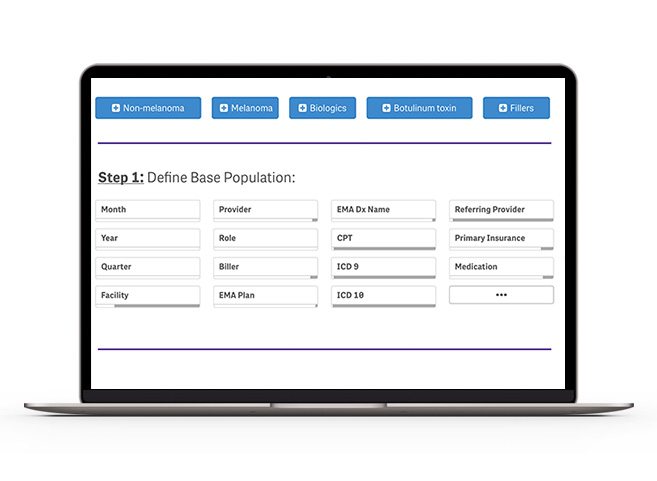 Clinical Analytics
Clinical Analytics
A valuable clinical use for data analytics in your orthopedic practice is the ability to perform advanced clinical targeting to identify specific cohorts of patients. You can follow up on patients who may have fallen through the cracks or identify patients who did or did not complete certain tasks.
Perhaps you would like to know patients who have undergone total knee or hip replacement surgery that need to come in for a follow-up assessment or x-ray. You could also identify patients who have been referred to physical therapy in order to monitor patient compliance with therapy plans and to assess their progress.
Being able to monitor pain medications prescribed to your patients is useful in combating opioid abuse. Your orthopedic EHR can provide data that allows you to see what pain medications each provider is prescribing. You could also drill down to the patient level to see how much has been prescribed over time, identifying patients that are at high risk of opioid addiction or patients you should wean off pain medications.
With targeted clinical information, you should have the ability to evaluate your patient population using different filtered parameters, to hone in on specific patients that may need additional follow-up care.
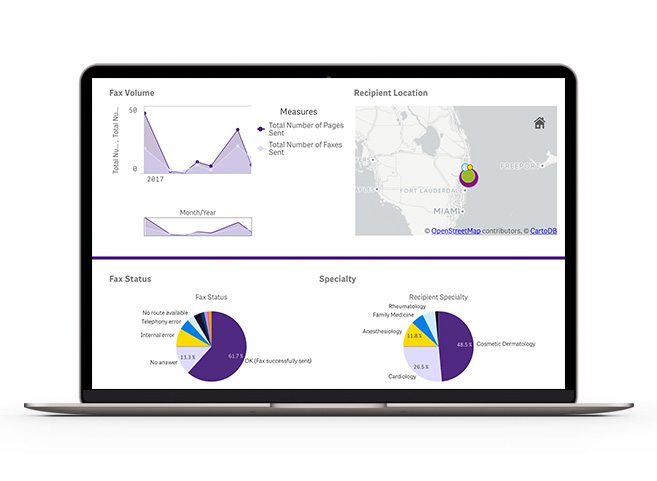 Operational Analytics
Operational Analytics
Another beneficial use for orthopedic EHR data is to analyze your practice’s operational performance. Monitoring and tracking daily operations is essential to maintaining efficiency. Your EHR should help easily provide data on wait times, the number of patients seen by provider and where medical assistants spend time to better manage staff performance and overall office workflow.
For many specialty orthopedic surgeons, your practice depends on referrals from other orthopedic or primary care physicians. Knowing where your patients come from can help strengthen your referral network and grow your orthopedic practice.
If you are considering opening a new location you may want to delve into your patient demographics to see where your patients live, to target a convenient location for your patient base.
Financial Analytics
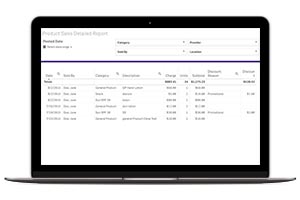 Insight into financial data and analytics is one of the most popular uses of orthopedic practice management and EHR data. With an integrated orthopedic practice management solution, information from the patient’s clinical visit flows seamlessly into the practice management system, streamlining the orthopedic medical billing process and creating a more complete financial picture.
Insight into financial data and analytics is one of the most popular uses of orthopedic practice management and EHR data. With an integrated orthopedic practice management solution, information from the patient’s clinical visit flows seamlessly into the practice management system, streamlining the orthopedic medical billing process and creating a more complete financial picture.
Access to your financial data through an integrated orthopedic software solution can help you understand what procedures you bill for most often, or how often providers override certain codes and why. You can also look into how often you refer patients out for complex hand cases or physical therapy, to identify if there are any missed revenue opportunities that you could recoup by bringing these services in house.
You can better understand your claims management process by filtering down to the payor level to see what claims get paid and denials occur, to try to address issues before claim submission going forward. Reporting tools can help you stay on top of your A/R so balances are paid in a timely manner. An additional benefit advanced analytics platforms provide is the ability to compare your practice performance with peer benchmarking data to help safeguard against audits.
Access to your data and analytics provides near real-time information that can show individual clinical performance and overall practice performance to help identify where you may fall short compared to other orthopedic surgeons. Having this knowledge can help you strategize and understand the areas where you excel and where you could improve. Using paper and pen to capture such metrics would be very challenging, and not all orthopedic EHR systems are equipped to capture such data.
How can Modernizing Medicine help you collect and analyze your orthopedic data?
Modernizing Medicine’s orthopedic solutions backed by its dedicated team can help you gain a comprehensive view of your orthopedic practice’s health. Flexibility and accessibility are paramount, so we provide a variety of data solutions in our Analytics module* to meet your practice’s needs.
- Data Explorer. The Data Explorer solution is a self-service set of reports that allows you to build reports with multiple dimensions and export them for further manipulation and analysis. Data Explorer gives you the flexibility to explore raw data on your own to answer specific questions.
- Premium Analytics. If you want to seriously advance your practice’s operations, you can opt for our full Analytics platform and gain access to a more extensive set of data that includes a wide array of prepared dashboards. This platform offers benchmarking data that allows you to compare your practice with national CMS data. Our Analytics platform digs deeper into orthopedic provider’s choices, behaviors and outcomes to help you identify opportunities for quality and cost improvement. This offering is currently available for all orthopedic clients.
And don’t just take our word for it. Here’s what some of our clients have shared.
Samantha Childs, billing administrator, Panhandle Orthopaedics, shared, “Analytics provides an integrated easy-to-use solution to find data on practice performance. I can customize my own reports and have the information I need at a few clicks of a button.”
Gabby Hawkins, Practice Manager with Spine Care of North Texas, said, “One of my favorite features in EMA is the ability to run a report on our patient referral sources. We send all referring physicians a personalized letter thanking them for trusting us with their patient and summarizing the treatments discussed. Strengthening our physician referral network is critical to growing our patient population and practice.”
*Additional fees may apply.





